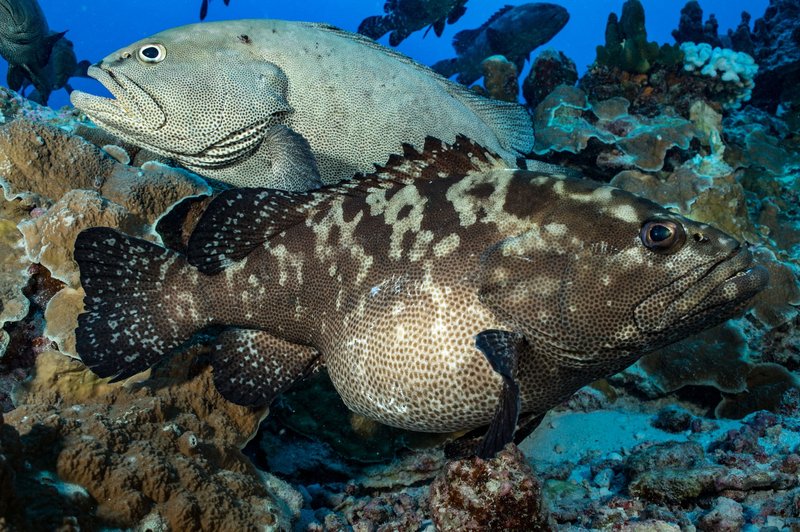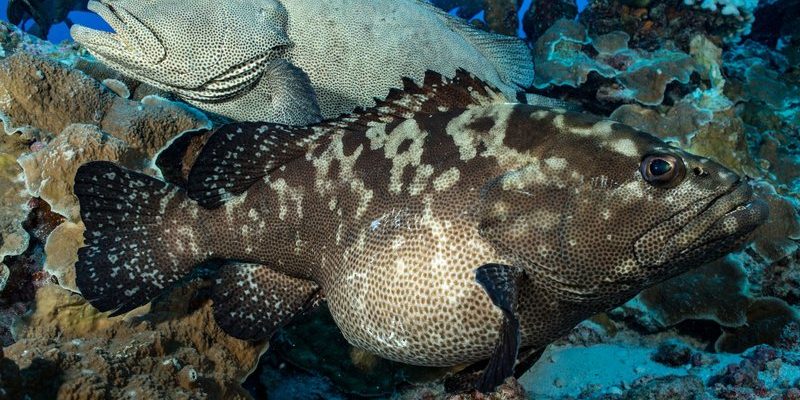
Now, if you’re new to the topic of fish breeding, especially for a species as intriguing as the grouper, don’t worry! Let’s dive into the basics without getting overwhelmed. Groupers are a diverse group of fish, found in warm, shallow waters, and their breeding habits can vary greatly depending on their specific type. So, grab your favorite drink, and let’s explore the world of grouper reproduction together!
Understanding Grouper Species and Their Habitats
To appreciate grouper breeding, it helps to know a bit about the different species. There are over 150 types of groupers, ranging from the small red grouper to the impressive Goliath grouper, which can weigh over 800 pounds! Each species has its own unique breeding characteristics, often influenced by their environment.
Groupers typically inhabit coral reefs, rocky areas, and mangroves. These habitats provide safety for their young and a rich source of food. The health of these ecosystems plays a crucial role in the success of groupers’ reproduction. If the environment is thriving, so are the groupers. Conversely, if habitats degrade due to pollution or climate change, their reproductive success can decline. Isn’t it wild to think that the very place they call home can impact their future?
Breeding Season: When Do Groupers Reproduce?
Groupers have a specific breeding season that often aligns with seasonal changes in water temperature and lunar cycles. Generally, they are more active in the spring and summer months, when the water is warmer and there’s an abundance of food. You might find it interesting that some species even synchronize their spawning with the full moon, a phenomenon that’s both mysterious and fascinating.
During this time, groupers gather in large groups, often referred to as spawning aggregations. Imagine a party where everyone is invited to mate—this is what happens in the ocean! These gatherings can attract many fish, providing a higher chance for successful fertilization. It’s nature’s way of ensuring that even in vast oceans, groupers can find each other and breed effectively.
The Mating Ritual: How Groupers Choose Partners
Now, let’s talk about how groupers connect with potential mates. They often display courtship behaviors that can involve intricate movements. Males might showcase their size and strength, performing displays to attract females. Think of it as a high-stakes dance-off!
The fascinating thing is that some grouper species are hermaphroditic, meaning they can change sex, typically from female to male. This adaptation can be crucial for maintaining balanced breeding populations, especially after a significant number of males are removed from the group due to fishing pressures. Isn’t nature clever? By having the ability to flip their gender, groupers can ensure that their species continues even if the odds aren’t in their favor.
Spawning Process: What Happens Underwater?
Once a pair of groupers has found each other and completed their courtship dance, they engage in the spawning process. This typically takes place in shallow, warm waters that provide a safe environment for their eggs. Females can release thousands of eggs at once, while males release sperm to fertilize them.
The eggs are usually buoyant, which allows them to float in the water column for a while. This drifting helps to disperse the eggs, giving the hatchlings a better chance to survive in a diverse habitat rather than clustering in one spot where predators might easily find them. Think of it as scattering seeds across a garden—some will surely take root and grow, while others may not, but there’s a greater chance for survival overall.
Early Development: From Eggs to Juvenile Groupers
After spawning, it’s all about survival for those tiny fertilized eggs. Depending on the species, the eggs typically hatch within a few days. The newly hatched larvae are microscopic and drift in the ocean currents. At this stage, they are vulnerable to predators and environmental changes, much like a young bird learning to fly for the first time.
As they grow, these larvae will start feeding on plankton and eventually settle into more structured habitats, like coral reefs, where they’ll find shelter and more food. It’s a crucial transition period, and many factors can influence their survival rates, including water temperature, food availability, and habitat health.
Challenges in Grouper Reproduction
Despite their fascinating breeding strategies, groupers face numerous challenges that threaten their populations. Overfishing is a significant issue, as many species are considered delicacies in various cuisines. When adult fish are removed from the ecosystem, it can disrupt their breeding cycles.
Additionally, habitat destruction from human activity harms their spawning grounds. Corals are damaged, mangroves are removed, and pollution accumulates, all of which can reduce the success of breeding and the survival of young fish. Protecting these environments is vital for the future of groupers.
Conservation Efforts: Protecting Grouper Populations
In response to the challenges groupers face, numerous conservation efforts are underway globally. Many regions have established marine protected areas (MPAs) to safeguard essential habitats and allow grouper populations to recover. These efforts create safe zones for breeding and juvenile development, ensuring that future generations can thrive.
Community involvement is also crucial. Educating local fishermen about sustainable practices can help reduce overfishing. When communities understand the importance of preserving fish populations, they often become enthusiastic partners in conservation efforts. After all, a healthy ocean benefits everyone, from marine life to the people who rely on it for their livelihood.
In conclusion, the breeding and reproduction of groupers reveal the delicate balance of life in our oceans. From their elegant courtship dances to the challenges they face, groupers showcase the wonders of nature. By understanding their reproductive habits, we can appreciate the importance of protecting them, ensuring these magnificent fish continue to thrive for generations to come.

